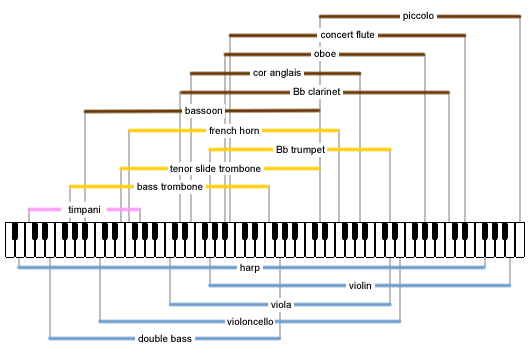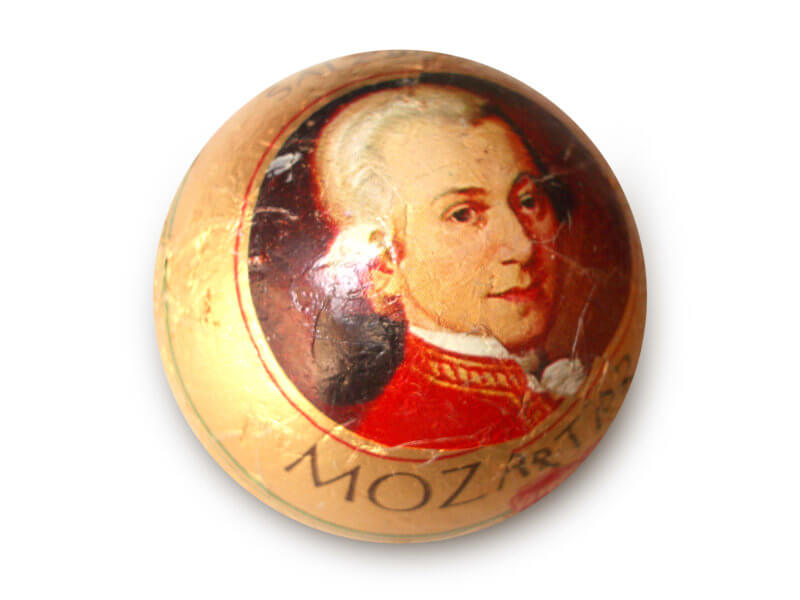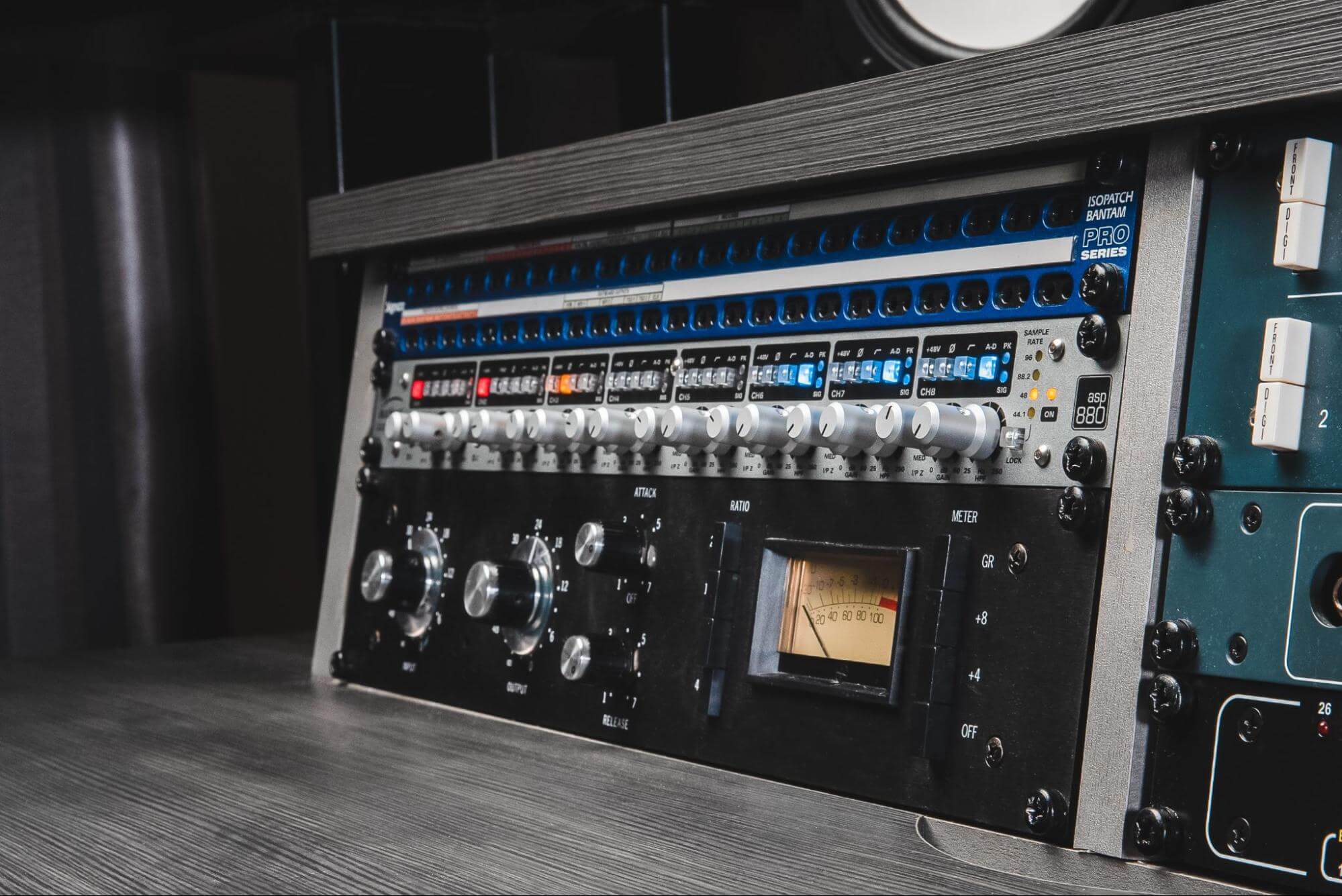Steve Intro
It may seem daunting to attempt the feel and sound of a monumental sweeping orchestral score.
To emulate the rush one gets hearing a bunch of amazingly accomplished orchestral players all playing a magnificent composition as one single force on a computer but it isn’t.
However, with the glory of technology that did not exist when 99% of the orchestral music you know and love was originally composed.
You can make something that will stir others’ hearts as much as anything has stirred yours.
I would say it helps to understand a few fundamentals (without having to be able to read the dots on the staves etc). It can really quite simple.
1.What is symphonic music?
What is symphonic music?
Well, it’s in the word. “Symphonic” is derived from two ancient Greek words, “sym”, (as in sympathy) meaning “together”, and “phonic”, meaning “sounding”. So, “symphonic” literally means “sounding together”.
The word “orchestra” comes from another old Greek word, meaning the area in front of the stage in in ancient Greek theatre reserved for the musicians and singers
Anyway, here’s a simple way to make something that to the ear of someone not too familiar with “classical” music will sound quite authentic.
Just a thought- Mozart would have seized upon computers to aid him if he could. So go forward, knowing you are honouring him and all composers preceding yourself.
1)
Listen to what you love that others have done. Spotify (or whatever) all the symphonic music you love, anything, from Pergolesi (the “Quando Corpus” from his “Stabat Mater” just melts) through to John Williams and Hans Zimmer.
Just listen, play the music out while you’re having a bath, wandering around, just doing stuff- feel the ebb and flow of the the melody and dynamics. Listen under the notes and imagine what the composers saw in their minds as they wrote.
2)
When you feel inspired (another thought- you don’t “work” music- you “play” it- funny, eh?), bung up a simple loop (far better than a click).
Find a tempo which just feels right, and a simple string pad that sounds just nice and stringy. Pretty much all synths have that “string orchestra” patch.
3)
Then press record, and play your random chord musings, plonk your fingers down wherever, just keep going.
If in need have a cheeky glass of wine or whatever helps you getting in the moment, feel confident that’s what all who have gone before you have done too (with very few exceptions) quantise to taste.
4)
Play it back when you feel you’ve had enough and chop your favourite two or three 4-bar sequences from what you have just done and dump the rest.
5)
Take those sections and order them in a way that feels right to you. If it sounds good to you, that’s all you need concern yourself with. Loop the whole sequence.
6)
Dial-up a more solo sounding string patch (or a clarinet patch, french horn, whatever), and play a melody over your chords, let go and see what happens.
If it feels like “work” (see step 2), stop till it feels like play. Oh, and only use one finger.
Part two will explain this, but for now choose your favourite digit and imagine you’re playing the real instrument.
7)
When done, listen back and choose what makes you feel best and edit out the bits that don’t. Bung it all together, mute the original click/loop, chuck gobs of reverb to taste over the master and you’re done.
In part two, we’ll look at the sections of the orchestra, and how they work together.
Orchestral Range Pic

2. What an orchestra is made of.
What an orchestra is made of?
It can be broken into 4 rough families- woodwinds, brass, percussion, strings, (and if you want to make 5 and 6 and add the human voice, choir., piano and anything you like).
We’ll start with the simpler of them- the “classical orchestra”. Comprised of the above at one of its greatest, Beethoven’s Ninth Symphony, finished in 1824, this configuration of instruments remained from the mid-Mozart era (1780 – ish). We’ll look later at more modern orchestral forces.
They’re mostly all monophonic. The strings, which always convey the greatest part of anything orchestral, can play chords, but for this, lets pretend they can’t. Hence the “pick your favourite finger” bit above.
So you’ve made a beautiful soaring melody on top of your string pad, and now we’re going to dress it up a bit.The first section we’ll deal with, strings. like a bunch of guitars with diff shapes and sizes, but played with a bow.
1)
1st violins– The largest of the groups of strings, this section usually carries the main melody
2)
2nd violins– Support the 1st’s melody- unison (plays the same note), the unison one octave above or below, a harmony at the third interval etc, or a counterpoint (both of those will be addressed be in the next articles)-
counterpoint, a contrapuntal melody means a melody that weaves around the 1st Violins, a good example is Mozart’s piano concerto no 20 in d minor, just before the piano comes in.
3)
Violas– Slightly bigger violins. They do the hard work and keep the orchestra together, playing the middle harmony, sometimes as slow notes, sometimes quick and sharp.
4)
Cellos– these play the bass, whether acting as the left hand on the piano, they are the governors of the harmony, they tell one where you are in the whole stream of the music.
5)
Basses:
Through this period, the basses usually played to deepen the cellos, one octave below.They have 3 main articulations-slow and majestic (legato), short (spiccatto) and plucked (pizzacato), Usually one note at a time per part.
Woodwinds:
Flute, oboe, clarinet, bassoon. Each work as of the above, apart from being truly monophonic (they really can’t play chords)- these as a group echo the top-to-bottom of the strings.
Think of flute like a sylph (portrayed in old paintings as a beautifulair-spirit throwing lillies on a pond etc), an oboe as her younger brother, the clarinet as her suitor, and granddad being the bassoon. Or whatever you like.
Brass:
French horn. trumpet, trombone. tuba. The french horn, or commonly referred to nowadays simply as the “horn” is a lead instrument of the brass section.
Trumpet, trombone and derivations don’t have the sound to listened to all the time. It’s basically blowing a raspberry down a metal tube.
It comes from an old hunting horn. Some (and this was ubiquitous in olden times) regard the horn as part of the woodwind section.
The rest sound magnificent in a brass band, but used orchestrally, they cut through a mix.
Percussion:
Anything else, esp hit with a hammer. Tympani, bass drum sn etc. Also pianos and all keyboard instruments. They originally kept the time, and harmony.
Last but not least, this is how an orchestra is mostly placed. Sometimes, 1st and 2nd violins are facing each other, sometimes completely upended, but this is the most used layout.
Orchestral Pan Pic

2. What an orchestra is made of. – 2nd para
So we can now transform your work of art into a classical orchestra. Now you know the utter basics.
If you’re doing a solo instument, a pno or violin playing with the orchestra, that’s a concerto. If you’re doing a big where the strings play the most part of everything, that’s a symphony.
Make your mind up which way to go.
Now forget everything you just read, and have fun. When you’re done, smother with reverb again and see how it all sounds one you take away the original string pad.
1) Scales, harmony and counterpoint and something else.
2) Scales- a sequence of notes that define the “feel” of a bit of music.
3) Harmony – notes on top of each other. A chord is harmony.
4) Counterpoint – done that before in the last section, can’t add any more.
So that’s covered then. Could go on endlessly about all the variations and history, but a) it’ll be totally irrelevant now, and b) if you were born at the end of the 18th Century, then it would be handy.
It’s the start of the 21st. Unless you want to be a string arranger or similar. But there are bundles of brilliant ones about. Hire them if you’re that bothered.
The point of this whole thing is to give you confidence by knowing only the relevant bits and by doing exactly what Mozart, Beethoven and Wagner would have done, if they used a computer etc, you’re in the true line of the old masters.
Orchestral Pan Pic here

2. What an orchestra is made of. – 2nd para
You really need- A decent computer- one that can handle the below A decent DAW of your choice.
Just like the modern equivalent of of a violin- invented so that families could get together and be what my friends call a “Boogie Box”.
Really was- in the 1500’s, these came about for that reason. That’s why a “cello” means “little”. Strings as a thing didn’t come into a dominant thing till the 1650’s. I”ve done it again, gone all history.
Like said, they’re an instrument in their own right.They have a history of compromise and adaptation – just like these instruments from the past. And take a while to learn.
Last but my no means least, a really good clean converter to get your sound in and out the computer.
Now, this is said with the full disclosure that I am an Audient costumer. But I went to them. One with negligible latency if you’re recording acoustic instruments.
And a piano, but most DAW’s will have a music keyboard one can play from the computer keyboard.
Record someone else? A microphone. I use a Slate ML1. Goes neutral sound in to the computer and can be changed after that, but that’s my pick. Have found the best converters are Audient.
That really is it, apart from something good enough to listen through. Headphones do the job, research if needing to know more.
You’re completely set up!Save and dump the last thing you’ve done. Forget it.Start from scratch.
1) Set up a click or a loop
2) Now imagine yourself the conductor, at the centre of a big group of musicians.
3) Move your hands about, then plonk them on the keyboard and fly away. Perhaps listen to previous composers you love.
4) Start adding the violins and the rest of the string section, the woodwinds then the brass.
If it needs percussion in the form of Tympani, Snare Drums and Bass Drum., add that too. And what else it wants, like choir.
So easy, and you’re done. Ignore whether you went outside the real-life range, this is a synth. It’s a different instrument, one that can do so much more, on to the next.
Orchestral Range Pic

3. The Modern Orchestra
The Modern Orchestra
Not much to say here, basically you can do anything, add anything etc etc etc. In any configuration too.
On top of the classical orchestra, add anything you like. Bingo a modern orchestra. Add really anything, then start removing the strings, woodwind and brass.Still a modern orchestra.
A composer called Mahler was the one who pushed things around the turn of the century.Then everything got bigger.
Onwards from him, composers scratched their heads regarding how to be bigger, better, newer, and forgot all about the audience.
Nowadays, you’ve heard everything that can exist in stereo- I have no idea how it’ll sound in 50 years, 100 years on etc.
Guess it’’l be down to how one actually hears and makes, we’ve reached the end of normal technological advances in music.
Though some quarters would have you believe that endless repetitions of the same artists or those who appear as them is the future, you know it isn’t.
Peter_Oundjian – Conductor_of_Toronto_Symphony_Orchestra_2014 here

4. Last Steps
Last steps
Take your score (and it is a score, even if you have put in the notes on a keyboard. Nearly all DAWs will output a bunch of notes like a score.
Pick up anything. Bang it and record it. Bounce it all down.
Nowadays, you’ve heard everything that can exist in stereo- I have no idea how it’ll sound in 50 years, 100 years on.
Guess it’ll be down to how one actually hears and makes, we’ve reached the end of normal technological advances in music.
Though some quarters would have you believe that endless repetitions of the same artists or those who appear as them is the future, you know it isn’t.
Our Products
-

2in | 2out Audio Interface
-

10in | 6out Audio Interface
-

10in | 14out Audio Interface
-

20in | 24out Audio Interface
-

24in | 32out Audio Interface
-

2in | 2out Audio Interface
-

4in | 4out Audio Interface
-

24in | 24out Audio Interface
-

Everything you need to start recording
-

8 Channel Smart Preamp with AD/DA
-

8 Channel Mic Pre & ADC
-

8 Channel Mic Pre + Tone Control
-

Modular Analogue Recording Console
-

Small Format Analogue Recording Console
-

Small Format Analogue Recording Console
-

Immersive Audio Interface and Monitor Controller
-

Desktop Monitor Controller



